
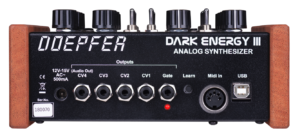
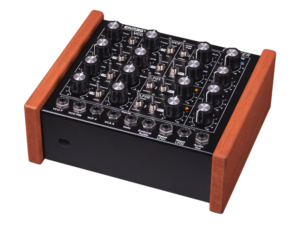






Download the Firmware here. https://soulsbysynths.com/oscitron-downloads/
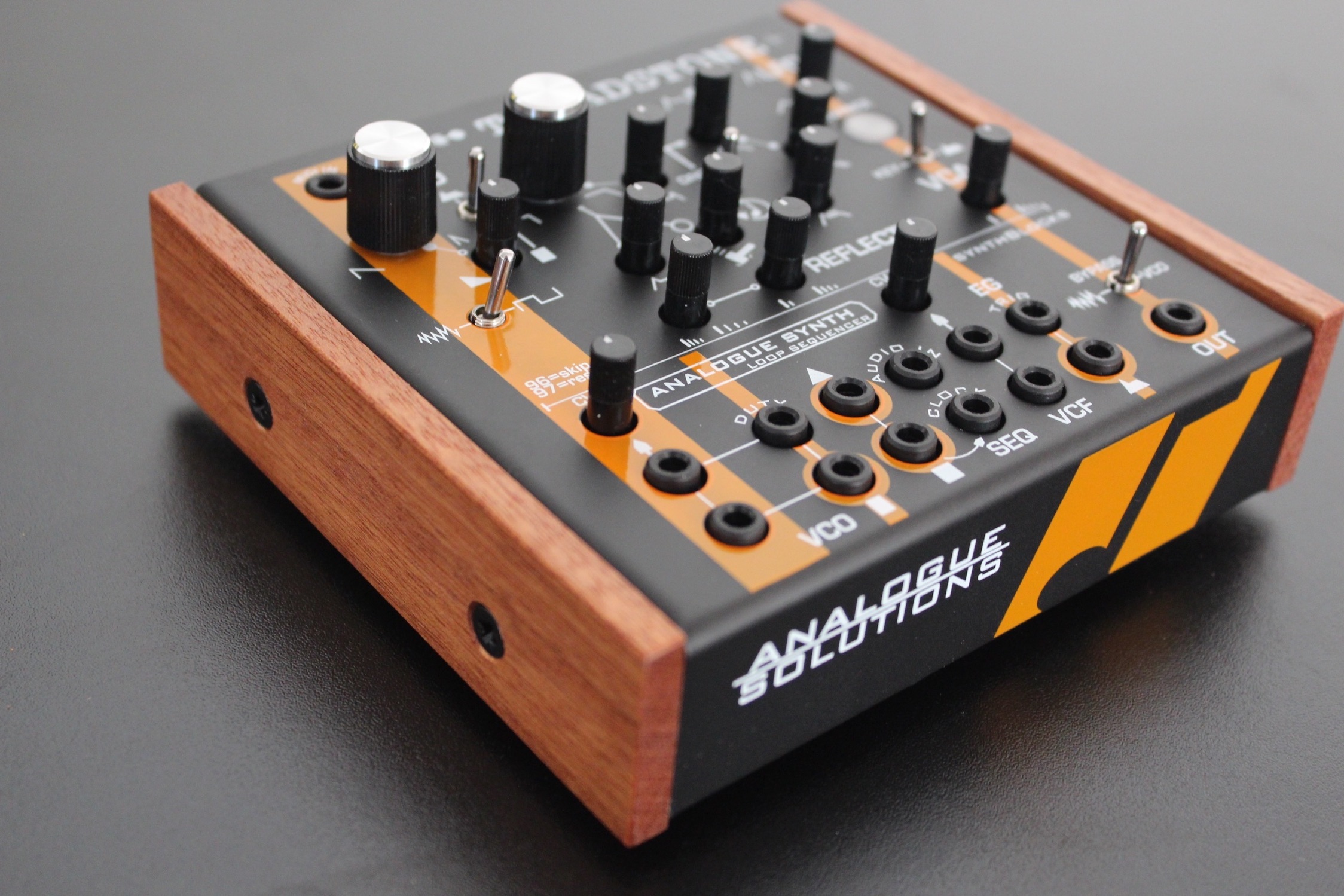

ARTURIA MINIBRUTE 2 SEMI-MODULARn ANALOG SYNTHESIZER ANNOUNCED
Arturia are thrilled to announce the imminent release of a new synthesizer, one of three new products which will all be available at stores from late february 2018.
MiniBrute 2 is a 25-key analog monosynth with semi-modular architecture, bridging the gap between the traditional synthesizer instruments and the exciting world of modular. MiniBrute 2 shares many of the same iconic features that made its predecessor such a success, including mixable oscillators, the acidic Steiner-Parker filter, and the chaotic Brute Factor. While keeping many of its signature elements, the tone-shaping potential of MiniBrute 2 has been almost exponentially increased.
The reimagined MiniBrute now features semi-modular architecture, adding a comprehensive CV/Gate patch matrix that allows users to both rework its internal signal routing, but also expand into the blossoming world of modular. It also features the same high quality, aftertouch-enabled keybed found in their flagship MatrixBrute synth, making it a joy to play. Truly an instrument designed for musicians by musicians.
Arturia’s latest small-but-mighty monosynth is the successor to their debut analog instrument, the MiniBrute. The first incarnation was released in 2012, and turned the industry on its head, offering a unique, affordable analog synth experience with attitude.
MiniBrute 2 also features exciting new features that greatly expand its potential, both as the focal point of a creative studio, and as a road-ready performance platform. One of these features includes the new Arturia Link, an exciting innovation that will help unify and democratize your creative environment.
More information on the Link system and how it integrates with other devices will be released shortly. Stay tuned for more Arturia product announcements, and all of your questions shall be answered.
To get a good look at MiniBrute 2 in action, and to hear how it sounds, check out the official Arturia MiniBrute 2 announcement video, featuring London-based trip-hop act The Salvador Darlings.
To get hands on with all 3 of the new products, find Arturia at NAMM 2018. They’ll be at booth #11910.
Discover the MiniBrute 2 introduction movie shot in London to hear it in action!
It is not over! Tomorrow we will announce another product. Make sure to check the Arturia website to be part of the first to know!
https://www.arturia.com/minibrute-2-landing
The Vermona uniCycle is the new VCO from synth masterminds Vermona. Sharing its core with the ’14 synthesizer the uniCycle adds some tricks for the modular system.
From the vermona site
Oscillator-circuits are used in our VERMONA synthesizers, we know how to design them. But instead of copy and paste, we reworked many aspects when adapting our circuits for modular purpose. What is great for closed systems might not always be perfect for modular systems.
All that development work resulted in uniCYCLE: compact, high-performant and stable.
VERMONA is proud to announce availability of the uniCYCLE voltage controlled oscillator — a six-waveform VCO (Voltage-Controlled Oscillator) module for the popular Eurorack small-format modular system with an outstanding feature set that is all set to help it stand out from the sound of the crowd (to partially paraphrase the early-Eighties British breakthrough hit from synth-pop pioneers The Human League, no strangers to Eurorack today themselves) — as of August 25…
Audio-oscillators are probably the most widespread modules found in Eurorack small-format modular systems today — hardly surprising since they are fundamental for generating synthetic sounds, both tonal as well as percussive. Oscillators, of course, are at the musical heart of VERMONA’s sought-after synthesizers, such as the flagship ’14 ANALOG SYNTHESIZER, so the company clearly knows how to design them. That said, instead of applying a ‘copy and paste’ procedure, it reworked many aspects, adapting its oscillator circuits to Eurorack small-format modular system usage. After all, what works well for closed systems might not necessarily be perfectly suited to modular systems. Such ‘due diligence’ displayed during research and development resulted in the uniCYCLE voltage controlled oscillator, a compact (10 HP-wide), high-performance, and stable oscillator offering all the common features that the discerning Eurorack small-format modular system user might easily expect… and, arguably, much more besides.
Besides classic sawtooth, triangle and square offerings, the uniCYCLE voltage controlled oscillator generates sine, even, and a special sawtooth with doubled frequency for a total of six waveform OUTPUTS. PWM (Pulse Width Modulation) is not only available for that square wave, but also even — a shape that only has even-numbered harmonics — can be transformed into a sine-like wave, while the doubled saw turns into half-pitched triangles. There are also six OUTPUTS, including LIN FM (Linear Frequency Modulation) and EXP FM (Exponential Frequency Modulation) as well as H – SYNC – S (hard and soft sync).
Saving space, one knob allows access to the uniCYCLE voltage controlled oscillator’s frequencies in three different modes. TUNE either controls the low frequency or audio range, respectively adding or subtracting exactly one octave. In this calibrated mode it provides a ‘dead-zone’ around its centre position, making it easy to access all three octaves without needing a centre-click.
Care was taken to make the uniCYCLE voltage controlled oscillator suitable for use in a musical context when VERMONA made its design decisions. Delivering superlative sound quality with rock-solid, stable tuning, the uniCYCLE voltage controlled oscillator obviously fulfils those all-important criteria, handling huge tuning ranges with the greatest of ease while strictly following the 1-volt-per-octave convention.
Clearly, then, the uniCYCLE voltage controlled oscillator makes a strong case for anyone to embrace Eurorack… and at least one such module should be in every Eurorack small-format modular casing!
Shipping now, the uniCYCLE voltage controlled oscillator is available to purchase through VERMONA’s growing global network ors (https://www.vermona.com/en/dealer/) with an RRP of €289.00 EUR (Europe) and $339.00 USD (USA).
For more in-depth information, please visit the dedicated uniCYCLE voltage controlled oscillator webpage here: https://www.vermona.com/en/products/modules/product/unicycle/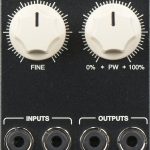
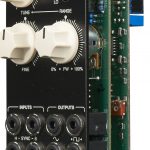
The SynthSummitShow episode 20: Taiho Yamada
Mr Yamada has an extensive history in the synthesizer world dating back to early days of the Alesis Rompler synths such as the Quadrasynth and has been instrumental in quite a few key synthesizers of our time. From the Alesis Andromeda, Ion, and Fusion to the M-Audio Venom Taiho Yamada’s career has been steeped in synth gold. Now striking out on his own with company Media OverKill (MOK) Taiho looks to set the bar with a new form of patent pending synthesis in WaveRazor. Join this show and learn details on how you could win a copy of both WaveForm and WaveRazor! It was a great interview filled with lots of 90’s and 2000’s synth history, very much worth a listen!
The Novation Circuit portable Groovebox
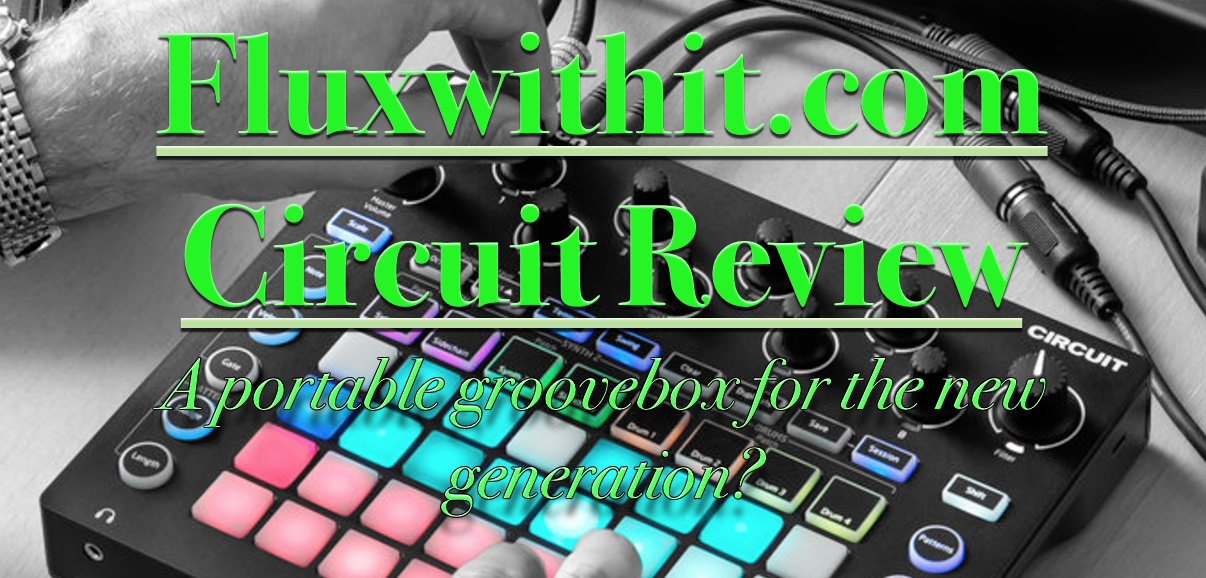
This Circuit review is one that I specifically requested from Novation. I was quite interested in the idea of a portable groove box that held one of my favorite synth engines in a battery controlled, forward thinking design. I was concerned about the macro control layout as I wasn’t quite sure what to make of the layout. I came away from my time with the circuit gaining a new appreciation for this different take on a portable synth. Instead of focusing on specifics like ADSR settings or complex oscillator set ups, This groove box opts to give you macros that can control 4 parameters on any given patch. While this might be a bit confusing, it also serves as the pathway to inspiration and discovery of new unexpected sounds. This is where Circuit can come into its own… The sequencer is a bit on the basic side being only 16 steps but it does allow for independent note lengths and pattern chaining. You can launch patterns in a similar way to the ableton live clip launching method. Speaking of Ableton Live, a copy is included free with Circuit and Circuit can be used as a controller for live.
The Battery power and the fact that it has a built in speaker was a large draw for me. I’m happy to say that through out this entire review I never once needed to actually plug it into the wall (though the wall adapter is included in the box). The internal speaker is quite adequate to get its sound across in a quiet setting (don’t expect it to be loud enough to get peoples attention in a noisy bus station but it will certainly turn heads if you are sitting in a starbucks.)
I found the over all build quality to be extremely good. The knobs feel VERY nice , smooth with decent resolution. the body didn’t creak or feel hollow and plasticy. The build felt so nice I let my 2 and a half year old son bash away on it with not so much as a scratch or a worry. I have to say he quite enjoyed it as well.
I was skeptical of the layout but came away impressed with the build quality. The constant updates from novation is a very promising sign and the addition of sample import and “sample flip” is not to be over looked. the rigid 16 step sequencer resolution is probably my biggest gripe but for what this product is, its hardly a deal breaker.
If you are looking for a groove box that you can confidently take with you on the go and is truly stand alone… this might be right up your alley.